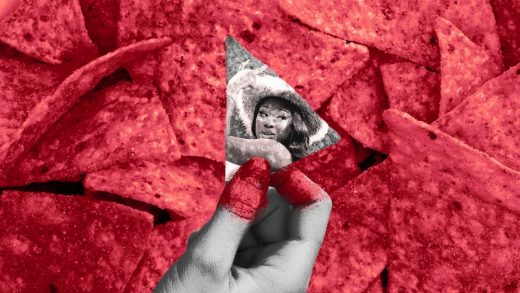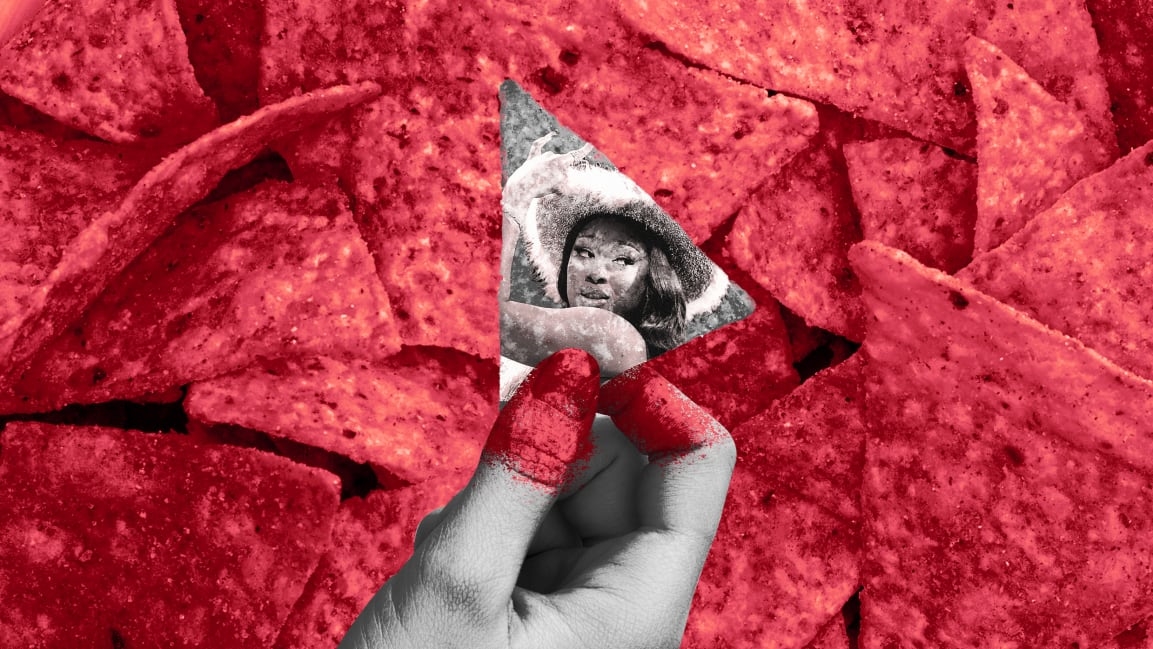Megan Thee Stallion’s new video will debut on a Cheeto
“Ooh, baby, baby. Buh-baby baaaby.” Those are the words of Megan Thee Stallion streaming through my phone, urging me on to photograph . . . my Cheeto.
I’m trying out Snapchat’s latest augmented reality lens, which premieres this Sunday for the Super Bowl. It promises to transform either a craggy Cheeto or a triangular Dorito into a music video. Specifically, the global premiere of “Flamin’ Hottie,” a limited-run Megan Thee Stallion track commissioned by Frito-Lay for its spice-themed Super Bowl push. (While “Flamin’ Hottie” is a shameless advertisement, I must note that the song is also a banger, sampling Salt-N-Pepa’s throwback megahit “Push It.”)
A half-second after I hold a tortilla chip up to the camera, I see the message “Snack Detected.” And suddenly, the music video appears inside. As it turns out, streaming on a snack is more feasible than you might expect! I move my chip through the air to peek at more of the frame, almost like I’m pointing a flashlight into a dark room. Then I realize that simply moving the chip closer to my camera gives me a larger window into this AR video. Despite the fact that I’m holding a highly processed corn product in my hand, these gestures feel completely natural.
It’s yet another irresistibly cheesy—err, spicy—technological marvel out of Snap, which just reported cutting its first-ever profit last quarter, thanks to an advertising business that’s grown 50% year over year. And a big part of that business owes thanks to the company’s sponsored augmented reality “lens” filters. Snapchatters use its AR lenses 6 billion times a day, according to Snap.
As I detailed in my 2020 feature on the company, Snap has always seen itself as a camera company, and into the future it aspires to be the platform for whatever comes after the smartphone—a platform that its cofounders, Evan Spiegel and Bobby Murphy, believe to be augmented reality glasses you wear on your face.
However, to get there requires hardware that hasn’t been perfected yet. It also requires training the public on a new behavior: scanning the Snap camera over everything and anything to see what digital magic might happen next. And brand partnerships like this one with Frito-Lay are a way for Snap to generate revenue while working toward its larger AR platform goal.
“As you hold the [Dorito] where the content overlays . . . that’s a totally new experience,” says Nina Mishkin, director of creative strategy at Snap. “The key to me is really opening this up as a consumer behavior and showcasing . . . what’s possible in AR.”
To build the experience, Snap worked alongside agencies GS&P, OMD, and House of V. They used traditional machine learning techniques to train an AI model to understand what a Cheeto and Dorito look like. In other words, people took thousands of pictures of individual Cheetos and Doritos to teach the software to identify these snacks. Because this work was done on Snapchat’s Lens Studio development platform, all the photos were taken with smartphones and ported in real time into Snapchat itself.
Technically, you are supposed to go buy a bag of Cheetos or Doritos to try the lens out. Mishkin insists this campaign is unique in that it’s backward: not promoting a product with an ad so that you then buy it, but urging you to acquire the product to experience an ad. “How do you get consumers to make that purchase [first] so the secondary use is the [AR] engagement on the day itself?” she asks.
But Mishkin also admits that the platform is hackable. Without Cheetos or Doritos onhand (a tragedy!), I used a standard tortilla chip, which worked perfectly since it shares the triangular shape with a Dorito. Faking the more iconic silhouette of a Cheeto would be tricker, but I suspect we’ll see cases of such forgery, too.
In any case, these hacks are hardly a loss for Frito-Lay, since consumers are still going out of their way to seek out and experience the company’s novel advertisement. “It’s putting your brand in the hands, and on the face, of consumers,” Mishkin says. “And delivering an AR experience that in some ways adds value and entertainment.”
Indeed, if “Flamin’ Hottie” convinced me of anything, it’s that this otherwise perfect tortilla chip in my hand was a disappointment. Because I really could go for a tear-jerking hit of radioactive red Flamin’ Hots.
Fast Company , Read Full Story
(29)



